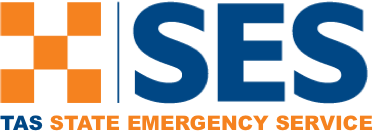Understanding Governance
Effective governance provides structure and leadership that will facilitate the management of lessons and ensure accountability and a just/learning culture.
Two aspects of effective governance that support Lessons Management are leadership and accountability. Rather than being discreet areas, they have many overlaps. In particular, strong leadership is a key to ensuring the development of an effective learning culture and organisational accountability.




Tasmanian Governance
Disaster resilience and Emergency Management rely on all agencies working collaboratively and with key external stakeholders for broad community safety and well-being. To understand the Lessons Management process, we must understand the current Governance in Emergency Management in Tasmania. The Tasmanian Emergency Management Arrangements and The Tasmanian Disaster Resilience Strategy contain important information about Governance.
The next few paragraphs provide insight into how this governance relates directly to Lessons Management in Tasmania. This module acknowledges the vast number of stakeholders in Emergency Management and the need to be aware that many of these organisations/agencies instigate various approaches to the Lessons Management process.
To ensure the process is transparent and functional Governance supports the cultural characteristics and accountability of the team and individuals in a structured way.
The Australian Institute of Disaster Resilience -AIDR-Lessons Management Handbook is our primary resource and reference point for the development of Lessons Management resources in Tasmania in-conjunction with other state resources.
Front cover of the AIDR Lessons Management Handbook

- Strategic alignment with relevant legislation, plans and priorities
- Structures and reporting requirements that are agreed
- Clear roles and responsibilities established and communicated
- Leadership positions that support, promote and reinforce Lessons Management activities including the allocation of resources.
Governance by location, hazard/ function and theme
There are three dimensions to governance structures and networks for emergency management in Tasmania. These are displayed in the diagram below and in text in the accordion below:
Diagram reflecting governance by location, hazard/ function and theme.

Leadership
Leadership needs to promote, enforce and prioritise Lessons Management throughout the agency. It will require accountability and ownership, but most importantly, behaviours modelled, discussed and promoted at senior management level. Leadership values modelled by senior management should translate to collaborative organisational structures that support equity, fairness and inclusivity.
Potentially sensitive situations in managing lessons heighten the need for leaders to foster a collaborative work environment. This environment allows individuals to feel comfortable enough to take risks, to share their knowledge and to speak their truth, all critical elements in the effective implementation of a Lessons Management cycle.

Inclusive, cohesive and functional Governance
Governance structures include external to government partners either through direct membership or via working or reference groups. All levels of government, business and industry, the not-for-profit community sector organisations and the research sector play complementary roles in supporting the disaster resilience of Tasmanian communities. Not all stakeholders are represented in all governance structures which highlights the connections and communications between the governance structures are essential.
Reference and working groups are important for collaboratively focusing on specific issues or areas of concern and facilitating expert advice and often include relevant business and industry representatives, NGOs and external researchers to focus on areas of specific concern.
Diagram reflecting inclusive, cohesive and functional governance




The State Emergency Management Committee -SEMC- Sub-committee strategic oversight of key themes
The FOUR sub-committees of the SEMC provide strategic advice and oversight of the themes identified in the Tasmanian Disaster Resilience Strategy. The aim is to formalise/build a network of individuals across the sector with related interests to enable cohesive action. The sub-committees support cross-agency collaboration and include external-to-government partners as necessary.
The sub-committees rely on the active commitment and involvement of sub-committee members. Each sub-committee also requires an effective lead agency with the ability and capacity to provide secretariat, policy and project support. Sub-committee membership, as well as support roles where allocated, must be regarded as core business by participating agencies. These sub-committees are described in the accordion and listed in the flowchart below.
The State Emergency Management Committee (SEMC) and its sub-committees plus related working groups focus on strategic emergency management themes across all regions, all-hazards and agencies.
Hazard specific governance arrangements exist for some of the highest priority hazards or functions (for example, governance structures focusing on fire, bio-security, energy security or social recovery.
Regional and Municipal Emergency Management Committees (REMCs, MEMCs) focus on all hazards within defined geographical locations.
The Emergency Management Sector Capabilities Committee is directly responsible for the overview, review and evaluation of Exercise and Lessons Management in Tasmania.
An example of a Lessons Management Structure in Tasmania.


